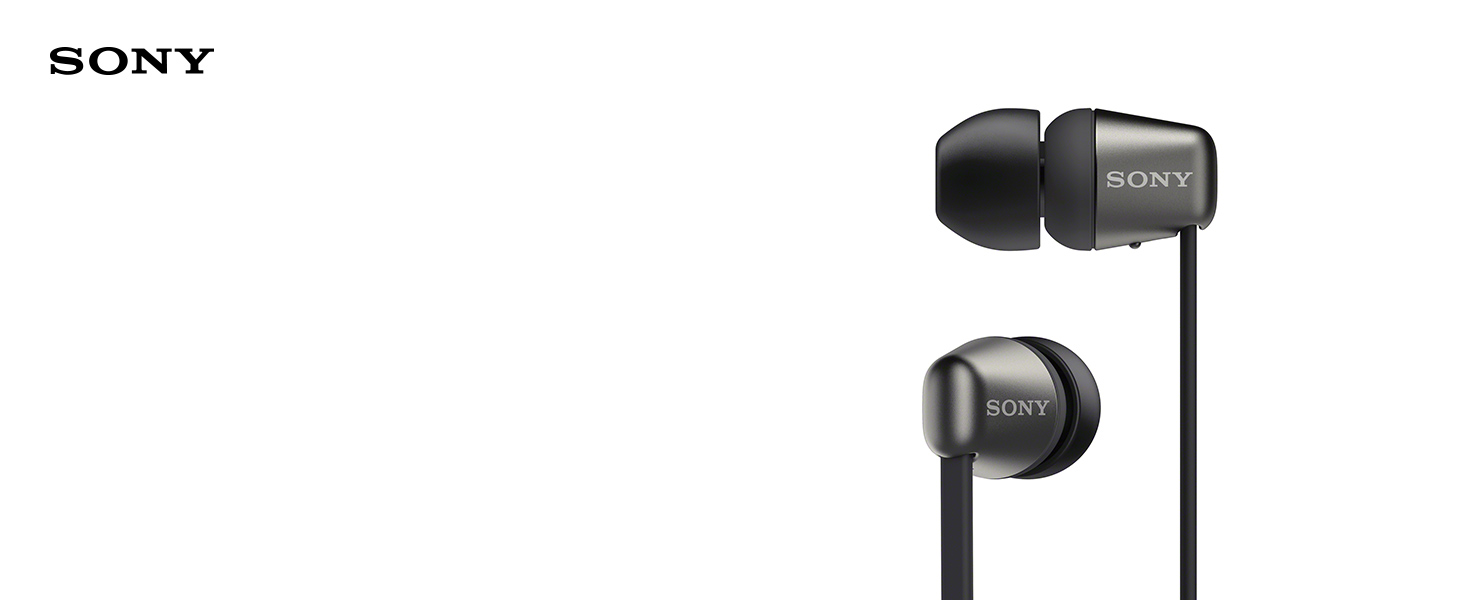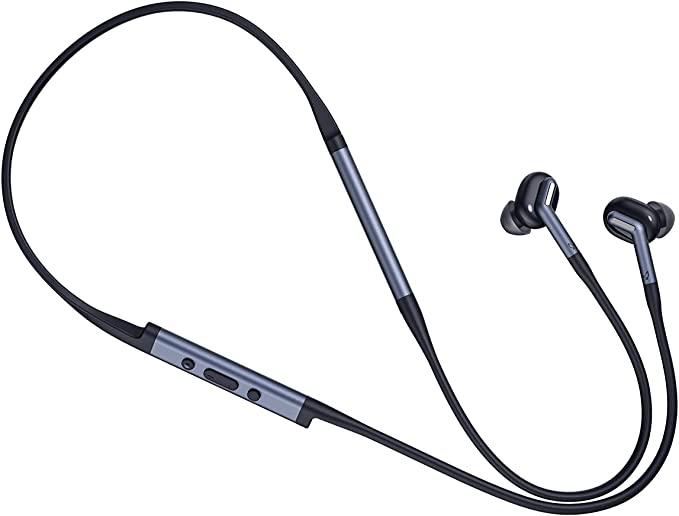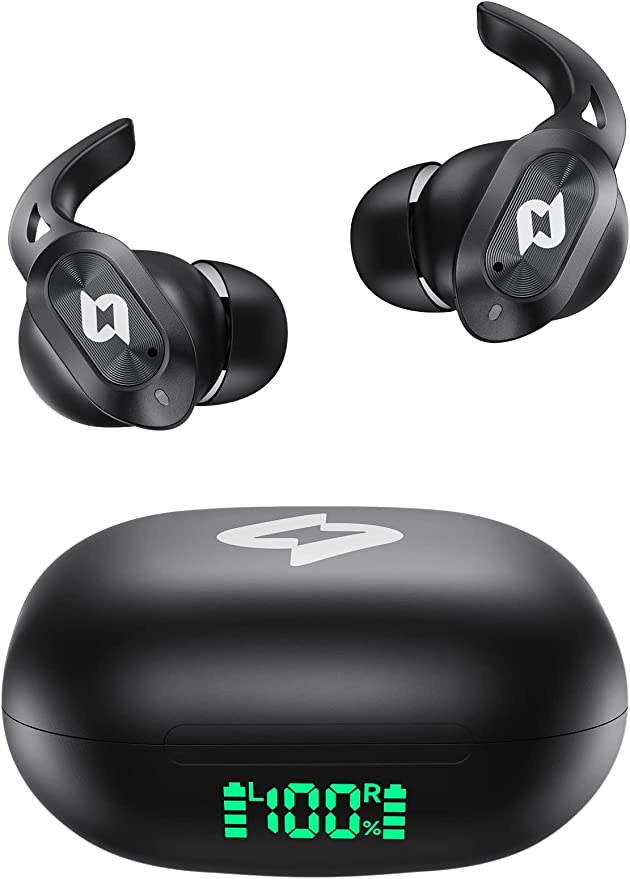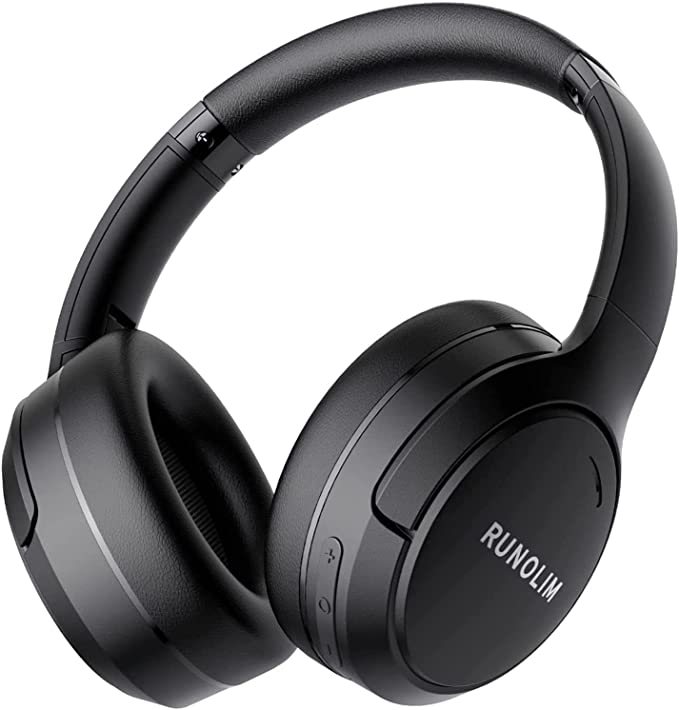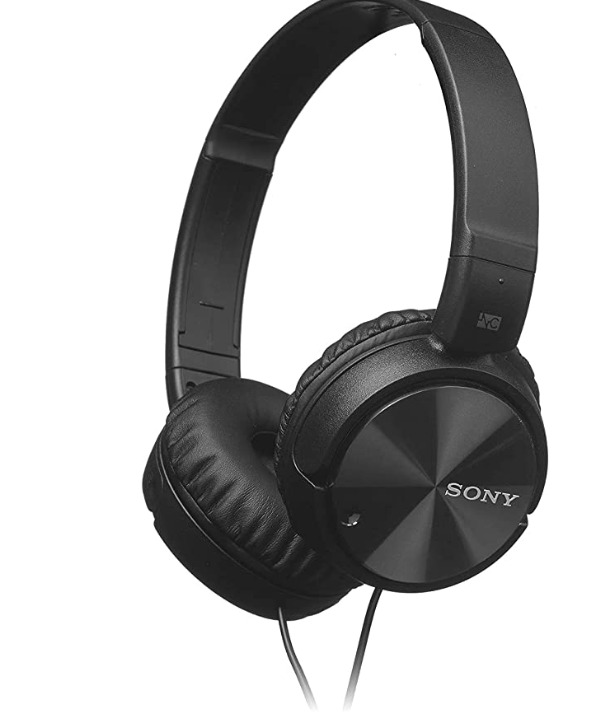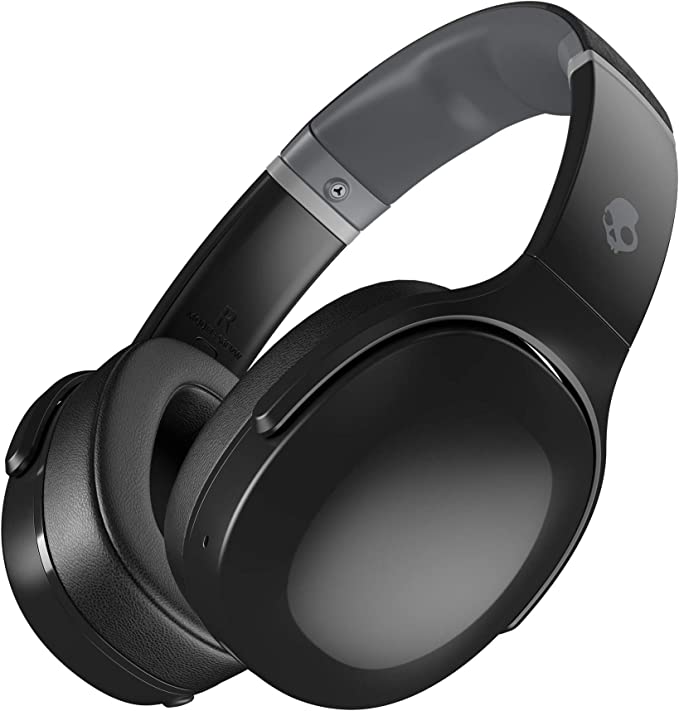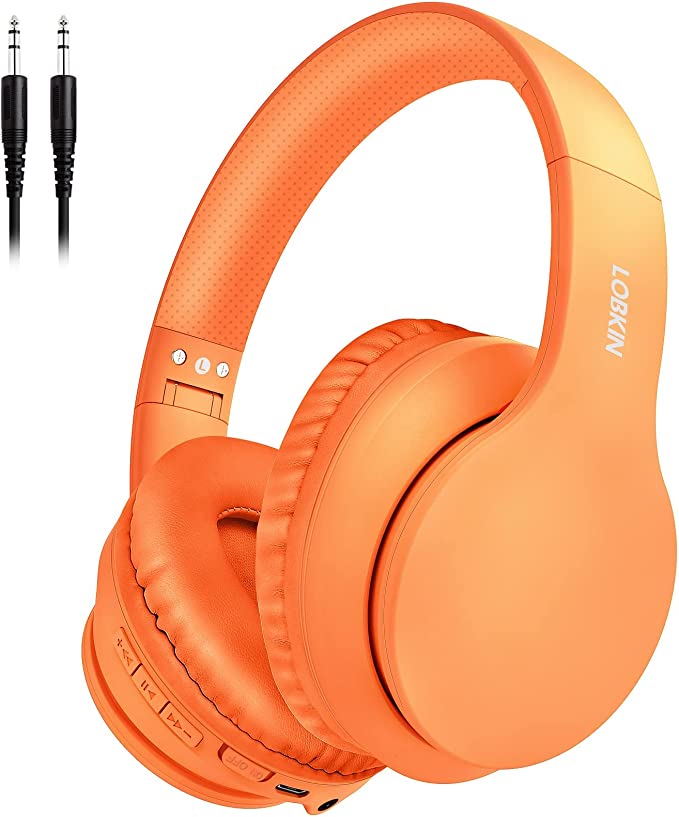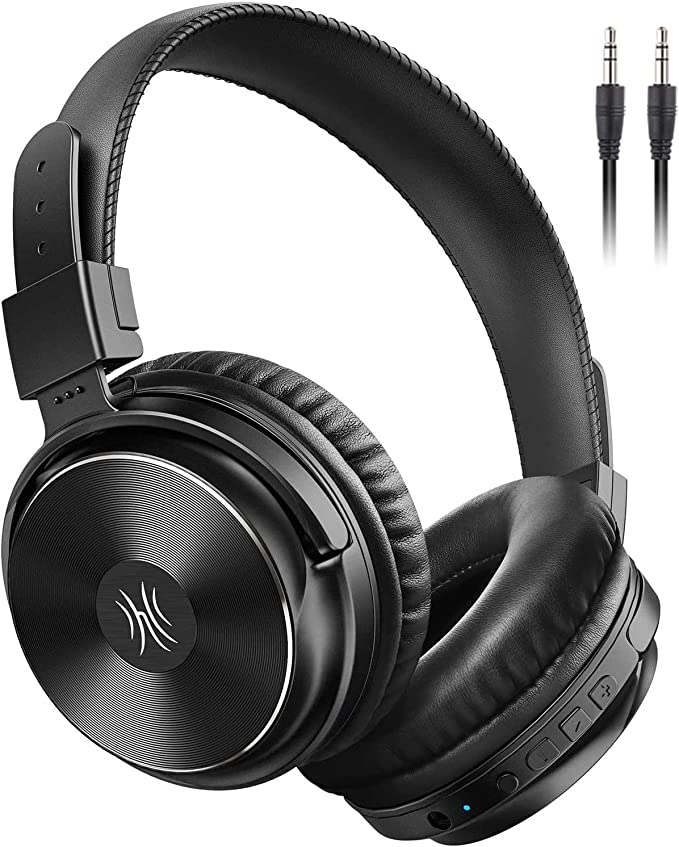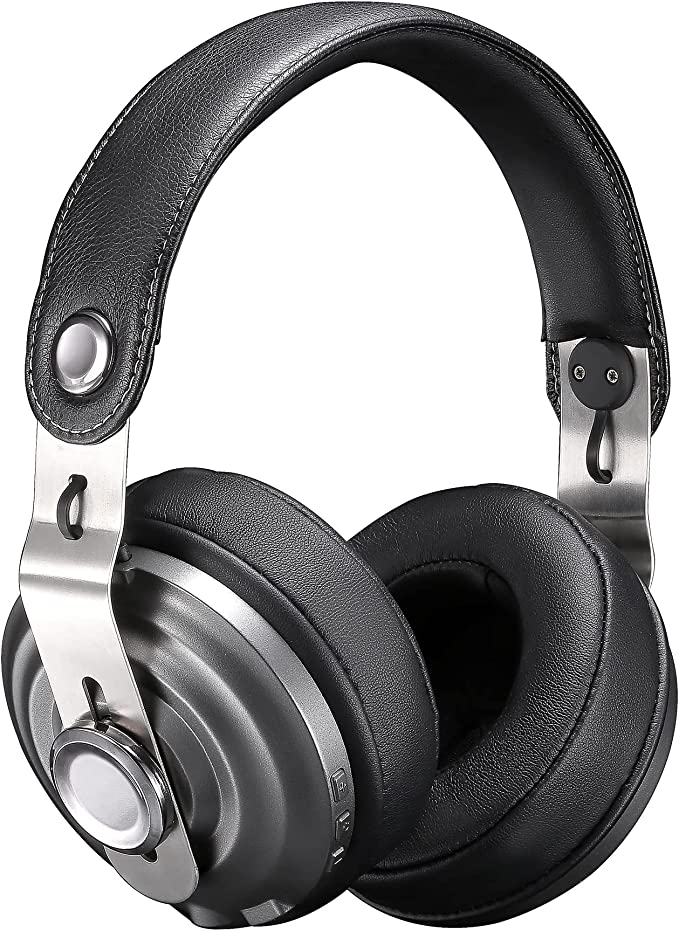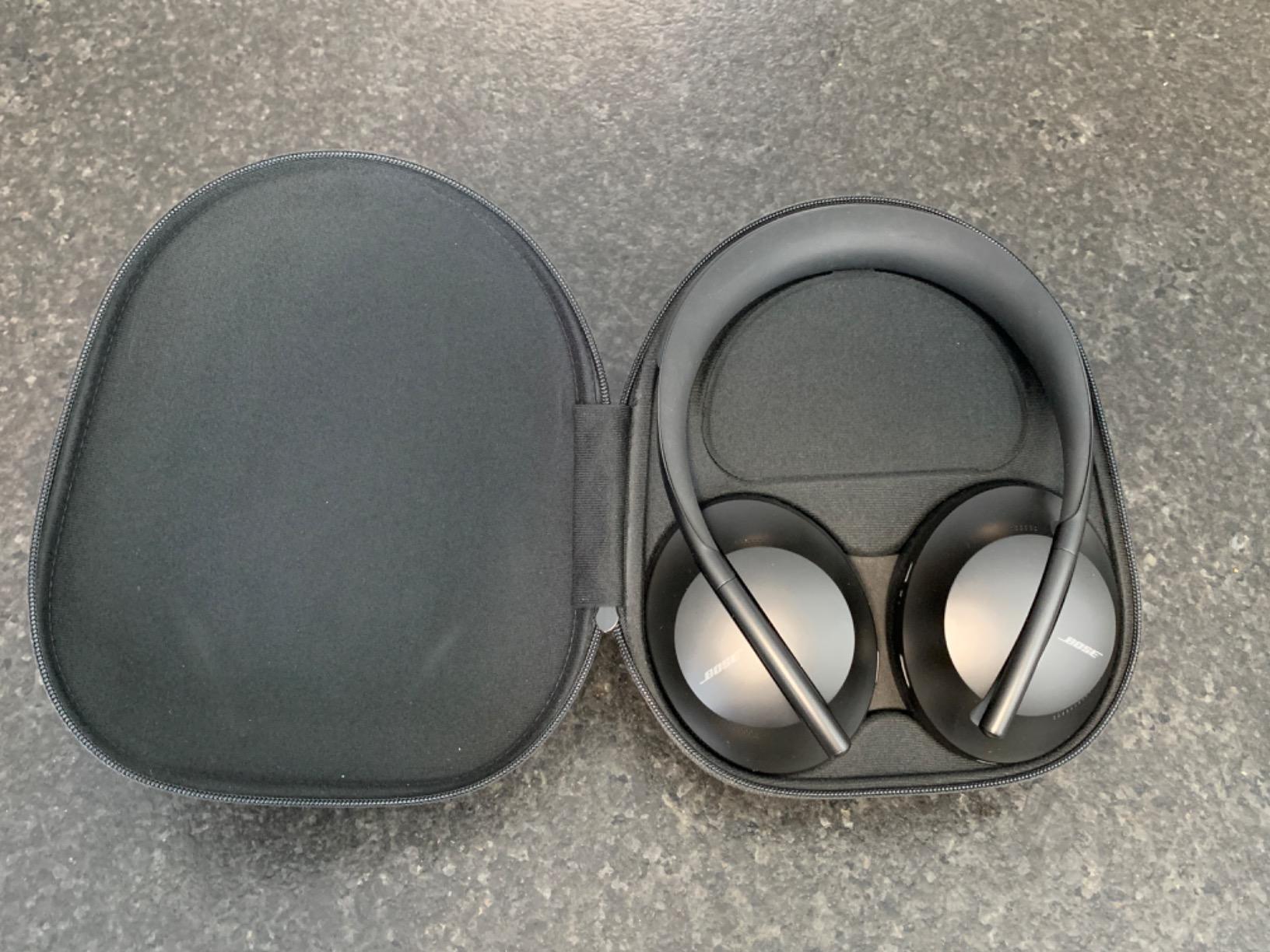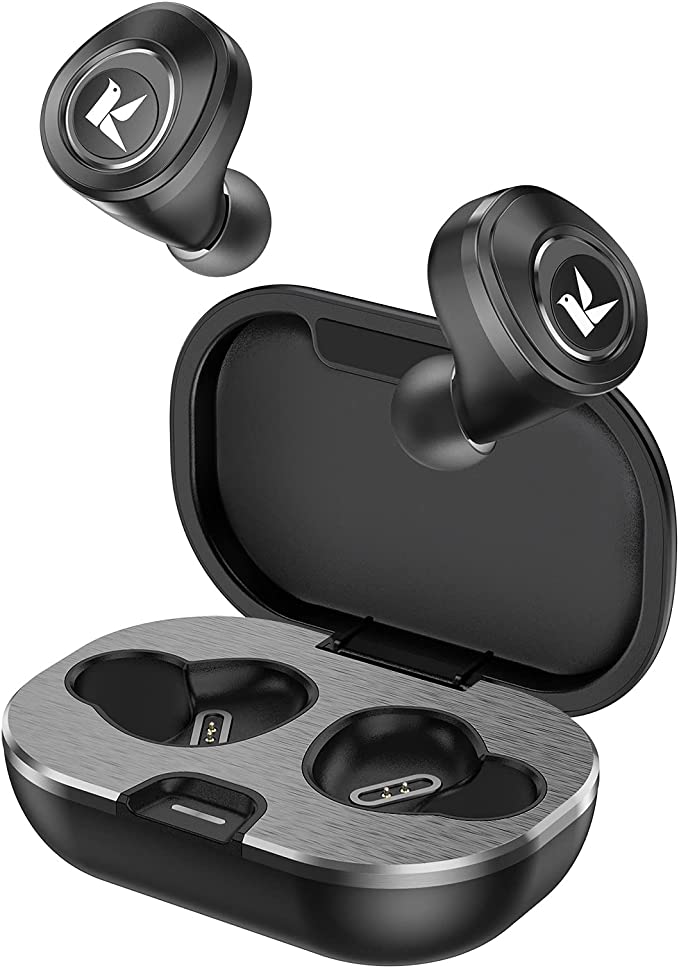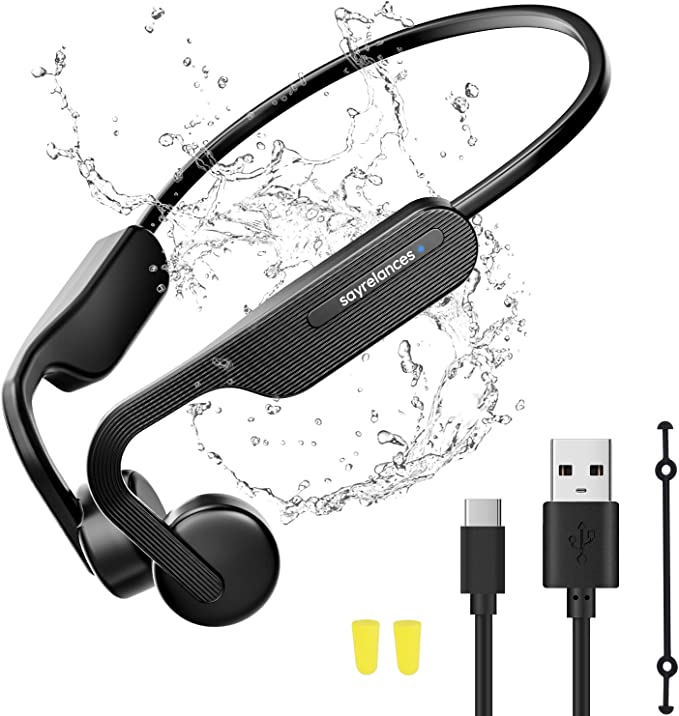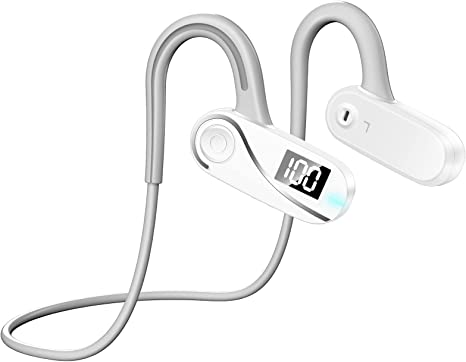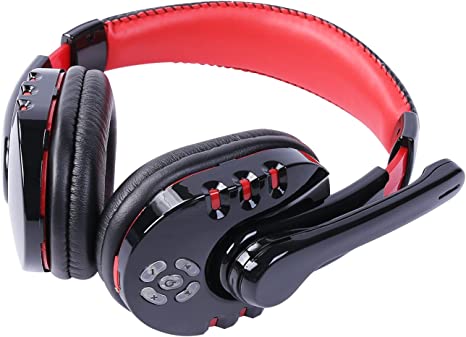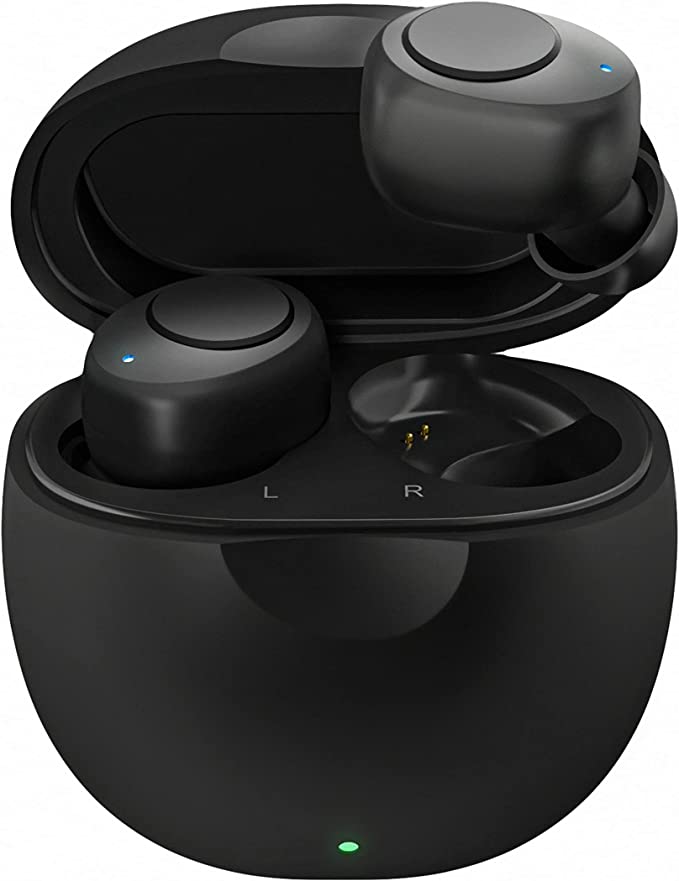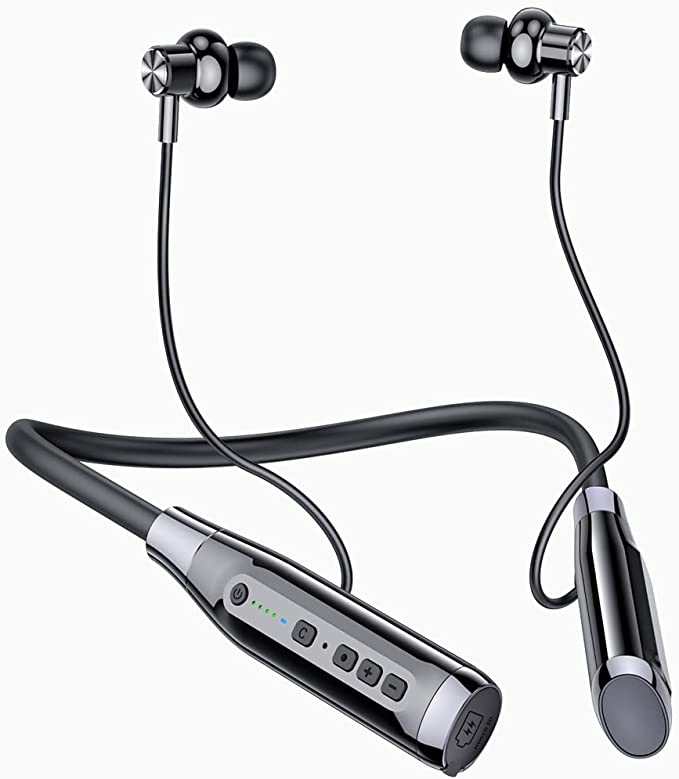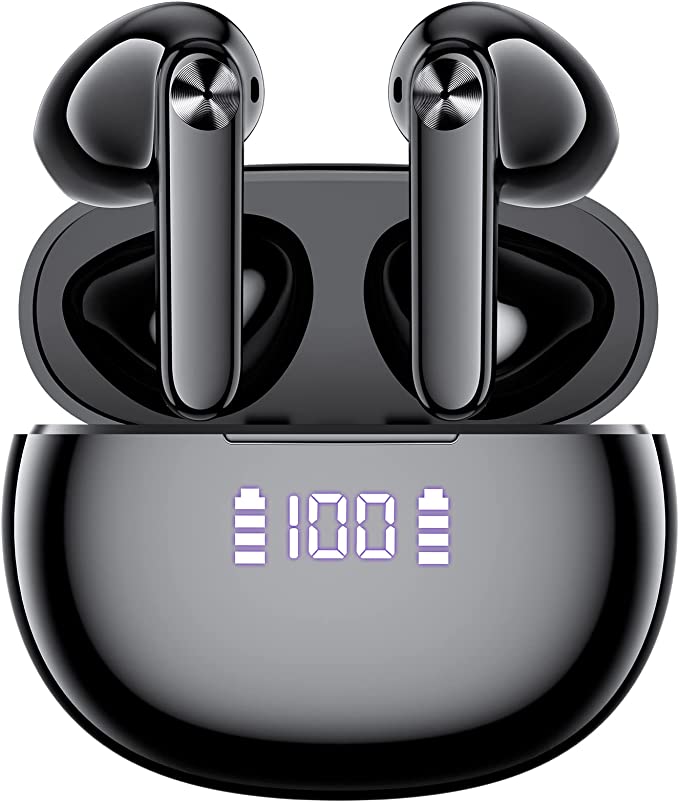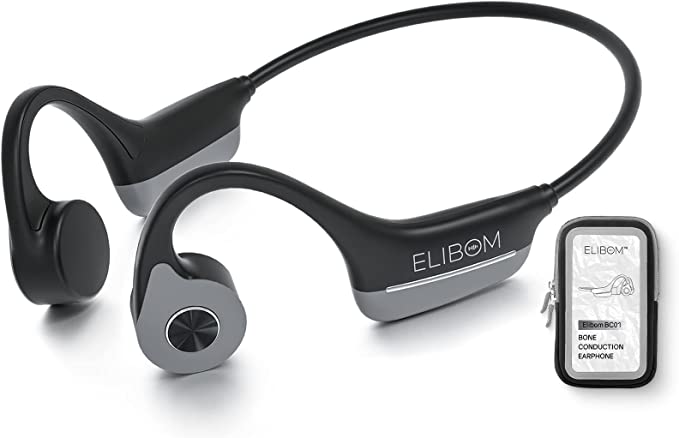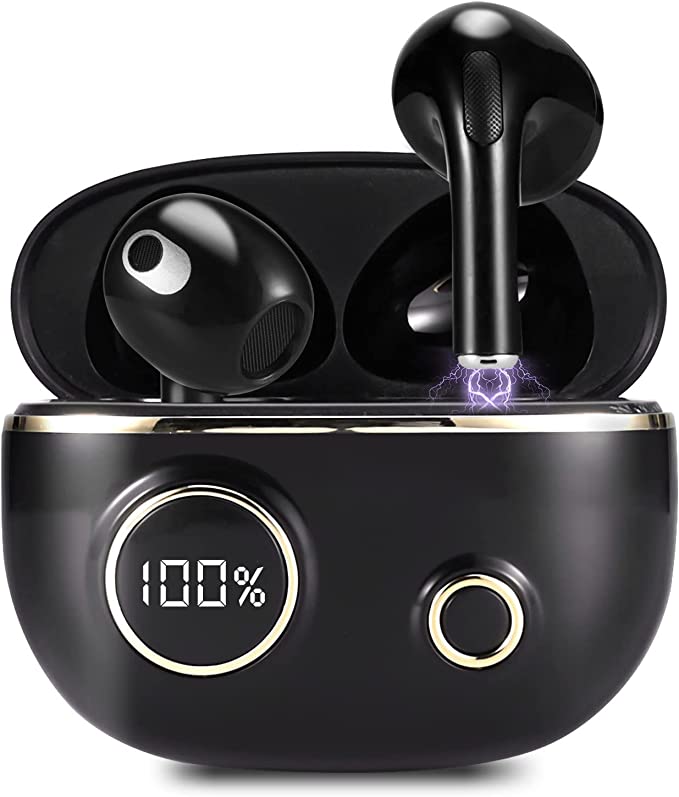Raycon The Everyday Wireless Headphones: The Science of Sound, Silence, and All-Day Listening
Update on May 14, 2025, 2:20 p.m.
The world we inhabit is a vibrant tapestry woven from sound. It’s the comforting rhythm of a cat’s purr, the energizing beat of our favorite song, the gentle whisper of leaves in an autumn breeze. But let’s be honest, it’s also the relentless drone of city traffic during our morning commute, the distracting chatter of an open-plan office when a deadline looms, or the cacophony that simply makes us crave a pocket of peace. For generations, we’ve sought ways to curate our personal soundscapes, to dial down the noise and amplify the notes that matter. Today, technology offers us increasingly sophisticated tools to do just that, and nestled within a seemingly everyday device like the Raycon Everyday Wireless Headphones lies a fascinating confluence of acoustics, material science, and wireless ingenuity. So, grab a cup of your favorite beverage, and let’s explore the remarkable science that empowers you to become the conductor of your daily auditory experience.

The Art of Subtraction: Finding Your Quiet with Active Noise Cancelling
Think about those moments you yearn for silence, or at least a significant reduction in the surrounding din. Perhaps you’re on a rumbling train, trying to lose yourself in a podcast, or maybe you’re at your desk, and the combined hum of office life feels like a tangible barrier to concentration. This is where the magic of Active Noise Cancelling, or ANC, steps onto the stage. It’s a technology that doesn’t just muffle sound; it actively erases it.
To understand this “acoustic alchemy,” we first need to appreciate what sound is: a wave, characterized by its peaks (compressions) and troughs (rarefactions) as it travels through the air. These waves have an amplitude (which we perceive as loudness) and a frequency (perceived as pitch), and importantly, a phase, which describes the wave’s position in its cycle at a given point in time. The core principle behind ANC is a beautiful bit of physics called “destructive interference.” Imagine two perfectly matched waves meeting, but one is an exact mirror image of the other – where one has a peak, the other has a trough. When they collide, they effectively cancel each other out, resulting in… well, something very close to silence.
The story of modern ANC often traces back to a rather uncomfortable flight taken by Dr. Amar Bose in 1978. Frustrated by the overwhelming engine noise ruining his enjoyment of in-flight audio, the MIT professor and founder of Bose Corporation began sketching out ideas for headphones that could actively combat the noise. It was a spark of genius that would take years to refine but eventually revolutionized personal audio, initially for pilots and later for all of us.
So, how do your Raycon Everyday Headphones perform this auditory sleight of hand? It’s a sophisticated team effort. Tiny, strategically placed microphones on the outside of the earcups act as vigilant sentinels, constantly “listening” to the ambient noise patterns around you – that persistent drone of the airplane engine or the low hum of an air conditioner. This captured sound information is then instantly relayed to a specialized microchip within the headphones. This chip is the brain of the operation; it analyzes the incoming noise and, with lightning speed, generates a new sound wave that is precisely 180 degrees out of phase with the unwanted noise – its “anti-noise” twin. This anti-noise is then played through the headphone’s internal speakers. When the original environmental noise and this newly created anti-noise meet in the space around your ear, they neutralize each other, much like +1 and -1 summing to zero. It’s like an invisible shield against certain sounds, allowing you to focus on your music, your thoughts, or simply the welcome absence of clamor.
Now, it’s important to note that ANC is a masterful artist when it comes to tackling consistent, low-frequency sounds – think the steady rumble of a bus, the drone of a jet engine, or the hum of office machinery. It creates your personal oasis in these environments. However, it’s less effective against sudden, sharp, high-frequency sounds like a dog bark or a nearby conversation. This isn’t a flaw, but rather a characteristic of how the technology works best. Still, the ability to significantly reduce that pervasive background thrum can be transformative, turning a chaotic commute into a productive or relaxing interlude.

Letting the World In (Wisely): The Science of Awareness Mode
While the cocoon of silence created by ANC is often a blessing, there are undeniably times when we need to be connected to the sounds of the world around us. Crossing a busy street, listening for an important announcement at the train station, or even just wanting to have a quick chat with a colleague without yanking off your headphones – these situations call for a different kind of auditory intelligence. This is where Awareness Mode, sometimes called Transparency Mode, gracefully steps in.
If ANC is about subtraction, Awareness Mode is about addition – but a very selective and intelligent kind of addition. It utilizes those same external microphones we discussed earlier, but with a completely different objective. Instead of sampling noise to cancel it, these microphones now carefully capture specific ambient sounds from your environment. These sounds – perhaps the barista calling your name, the approaching siren of an emergency vehicle, or a coworker’s question – are then thoughtfully passed through into your ears, often blending naturally with your music if it’s playing.
It’s a delicate balancing act. The technology is designed to amplify key external sounds without necessarily making everything louder. You regain situational awareness, a crucial factor for safety when navigating urban environments or for convenience in social interactions. Think of it as opening a carefully controlled window to the world, allowing you to stay present and responsive without sacrificing your personal audio experience. It’s the difference between being in an isolated bubble and being mindfully connected, a subtle but powerful shift in how you interact with your surroundings, all with a simple tap or button press.

Weathering Your Day: The Resilience of IPX4 and Enduring Power
Our days are rarely predictable. A planned jog might encounter an unexpected drizzle, a gym session will inevitably involve sweat, and even a moment of clumsiness in the kitchen could lead to an unfortunate splash. For a device designed to be an “everyday” companion, a certain level of resilience isn’t just a bonus; it’s a necessity. This brings us to the IPX4 rating of the Raycon Everyday Headphones.
That “IP” সামনে stands for “Ingress Protection,” an international standard (IEC 60529, to be precise) that classifies how well an electrical enclosure – like your headphones – is protected against the intrusion of foreign objects (solids, denoted by the first digit) and moisture (liquids, denoted by the second digit). In “IPX4”:
- The “X” simply means the product hasn’t been specifically rated for protection against solid particles, or the manufacturer has chosen not to provide that specific rating. It doesn’t mean zero protection, just no formal rating for it.
- The “4” is the key here for liquid protection. It signifies that the headphones are protected against splashing water from any direction. Imagine a light rain shower or a vigorous workout; the IPX4 rating indicates that the device is designed to withstand these conditions without succumbing to moisture damage. To achieve this rating, products typically undergo testing where they are subjected to water splashes from various angles for a specified duration.
So, what does this mean for you? It means you can confidently wear your headphones during a sweaty run, a light cycling session in misty weather, or even if you get caught in a brief downpour. They are, in essence, wearing a lightweight, invisible raincoat. However, it’s crucial to understand that IPX4 is about water resistance, not being fully waterproof. You wouldn’t want to submerge them in water or wear them in a torrential downpour. But for the everyday encounters with moisture, they offer a welcome layer of defense.
Now, powering all this sophisticated technology – the ANC, the Awareness Mode, the Bluetooth connection, and of course, the audio drivers themselves – requires a robust energy source. The Raycon Everyday Headphones boast an impressive 38 hours of battery life on a single charge. This isn’t just a number; it translates to tangible freedom. It could mean several days of commuting, an entire long-haul flight (and then some), or a full work week of focused listening without the nagging anxiety of constantly needing to find a power outlet.
The unsung hero behind this endurance is typically a lithium-ion battery. These batteries have become ubiquitous in portable electronics due to their high energy density (packing a lot of power into a small, lightweight package) and their ability to be recharged hundreds of times. The actual battery life you experience will, of course, vary based on factors like your listening volume and how frequently you use power-hungry features like ANC.
And let’s not forget the “built-in microphone” – or in this case, a chorus of five built-in microphones. These aren’t just for making calls. In modern headphones, microphone arrays are critical for effective ANC (as they capture the ambient noise) and for clear voice pickup during calls, often employing clever techniques like beamforming. This is where the microphones focus on your voice while trying to minimize the pickup of surrounding noise, ensuring that the person on the other end of the call hears you, not the café clatter around you. Technologies like MEMS (Micro-Electro-Mechanical Systems) microphones have enabled these tiny yet powerful sensors to be integrated seamlessly, contributing to both the audio features and the communication clarity of your headphones.

The Unseen Threads: Bluetooth and the Comfort of Connection
There’s a certain magic to the wireless world we live in, a subtle liberation that comes from being untethered. For headphones, this freedom is largely orchestrated by Bluetooth technology. Gone are the days of tangled wires snagging on doorknobs or getting frustratingly knotted in your bag.
The name “Bluetooth” itself has a rather charming origin, borrowed from Harald “Bluetooth” Gormsson, a 10th-century Danish king famed for uniting disparate Danish tribes. Similarly, Bluetooth technology was conceived to unite different devices wirelessly. It operates in the 2.4 GHz short-range radio frequency band, creating a personal area network (PAN) that allows your smartphone, laptop, or tablet to stream audio data to your headphones without a physical link.
When you listen to music wirelessly, the digital audio signal from your source device is first encoded (compressed) to allow for efficient transmission. This is where audio codecs like SBC (Subband Coding, the default for Bluetooth) or AAC (Advanced Audio Coding, favored by Apple devices) come into play. Your Raycon headphones then receive this wireless data stream and decode (decompress) it back into the analog audio signals that drive the speakers and ultimately reach your ears. Specific Bluetooth profiles, like A2DP (Advanced Audio Distribution Profile), are crucial for ensuring high-quality stereo audio streaming. Over the years, Bluetooth has evolved significantly, with newer versions offering improvements in range, data transfer speed, and power efficiency, all contributing to a more seamless and reliable wireless listening experience.
Finally, let’s touch upon the “Over-Ear” form factor. This design choice is not merely aesthetic; it’s deeply rooted in acoustics and ergonomics. Over-ear headphones, by their nature, fully enclose your ears. This creates a degree of passive noise isolation even before ANC is activated, as the earcups physically block some external sound. This enclosed design also allows for a more immersive soundstage, giving music a sense of space and depth. From an ergonomic perspective, the larger earcups can distribute pressure more evenly around the ears compared to on-ear models, and the headband is designed to balance the weight comfortably. Materials play a huge role here too – soft, breathable earcup cushions (often made from materials like protein leather or memory foam) and a well-padded headband are vital for ensuring that “long-lasting battery” can be matched by “long-lasting comfort.” After all, what good is 38 hours of playtime if you can only bear to wear them for one?
Orchestrating Your Auditory World
As we’ve journeyed through the intricate science packed within the Raycon Everyday Wireless Headphones, it becomes clear that they are more than just a conduit for sound. They are a testament to how acoustics, electronics, material science, and wireless communication can converge to empower us. From the wave-cancelling finesse of Active Noise Cancelling that carves out tranquility from chaos, to the mindful attentiveness fostered by Awareness Mode; from the everyday resilience offered by IPX4 protection, to the marathon endurance of a 38-hour battery and the clarity of multi-microphone arrays; and from the liberating embrace of Bluetooth to the enveloping comfort of an over-ear design – each feature is a note in a symphony of thoughtful engineering.
The true beauty of such technology lies not just in its complexity, but in its ability to seamlessly integrate into our lives, enhancing our experiences in subtle yet profound ways. It’s about giving you the conductor’s baton for your personal soundscape, allowing you to choose what to amplify, what to diminish, and how to engage with the rich auditory tapestry of your day. So, the next time you slip on your headphones, perhaps you’ll appreciate not just the music, but the incredible science that makes your perfectly orchestrated listening experience possible. And in that appreciation, perhaps, lies an encouragement to keep exploring the ever-evolving world of sound, and the technologies that help us hear it – and ourselves – a little more clearly.

